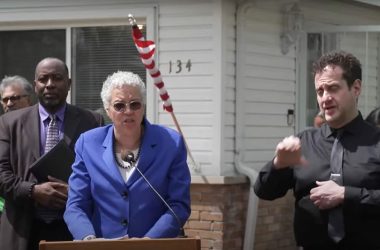WASHINGTON—(ENEWSPF)—June 20, 2014. U.S. Representatives Mike Quigley (IL-05), Tammy Duckworth (IL-08) and Jan Schakowsky (IL-09) are urging the Federal Aviation Administration (FAA) to conduct new public hearings and issue a new environmental impact study (EIS) of the O’Hare Modernization Program in response to increased noise pollution and questions raised over the hearings process.
“The FAA’s failure to focus on areas most impacted by the OMP in their public hearings and the inaccuracy and incompleteness of the information provided given the changes that have taken place since then is disappointing and calls into question the integrity of the environmental impact study process. As such, we write to request a full explanation of the FAA’s outreach to affected areas in advance of the OMP’s approval and strongly urge the FAA to undertake a new environmental impact study (EIS), accompanied by a new round of public hearings that will afford vigorous citizen input. Impacted citizens deserve a chance to participate and comment upon the changes that have so profoundly affected their lives,” said the representatives in a joint letter to the FAA.
Since October 2013, complaints on the impact the OMP, its newest runway and attending flight pattern changes at O’Hare have risen dramatically. In the ten years since the original EIS, significant changes to the implementation of the OMP underscore the necessity for a new assessment. Runways have opened out of sequence; new rules governing converging runways have pushed even more air traffic on the east-west configuration; and neighborhoods have been flooded with unexpected noise.
In addition, the FAA’s execution of public hearings in 2005 in advance of the OMP’s approval—part of the agency’s environmental impact study— indicate they were held in areas largely unaffected by increased noise. Moreover, constituents were never informed in any meaningful way how many additional flights—and how much more noise—they would be asked to endure once these changes took effect.
The representatives met earlier this year with FAA Administrator Michael Huerta to reiterate a request made in October 2013 that the agency reexamine the 65 Day-Night Average Sound Level (DNL) metric used to measure noise effects on individuals due to aviation activities. Lowering the level would potentially allow more residents to qualify for the O’Hare Residential Sound Insulation Program (RSIP). The representatives believe the metric is outdated and does not accurately “reflect the true level of discomfort experienced by residents.”
The representatives are also encouraging the Chicago Department of Aviation to actively work with the FAA to complete a new EIS and conduct new public hearings. The City of Chicago should devise a broad course of action in conjunction with the FAA and the airlines to reach solutions that will mitigate noise pollution and provide relief to residents. A separate letter sent previously to the CDA asks officials to consider expanding the Fly Quiet program, which encourages pilots and air traffic controllers to use designated nighttime preferential runways and flight tracks that direct aircraft over less populated areas, such as forest preserves, highways and commercial or industrial areas.
Source: Schakowsky.house.gov








